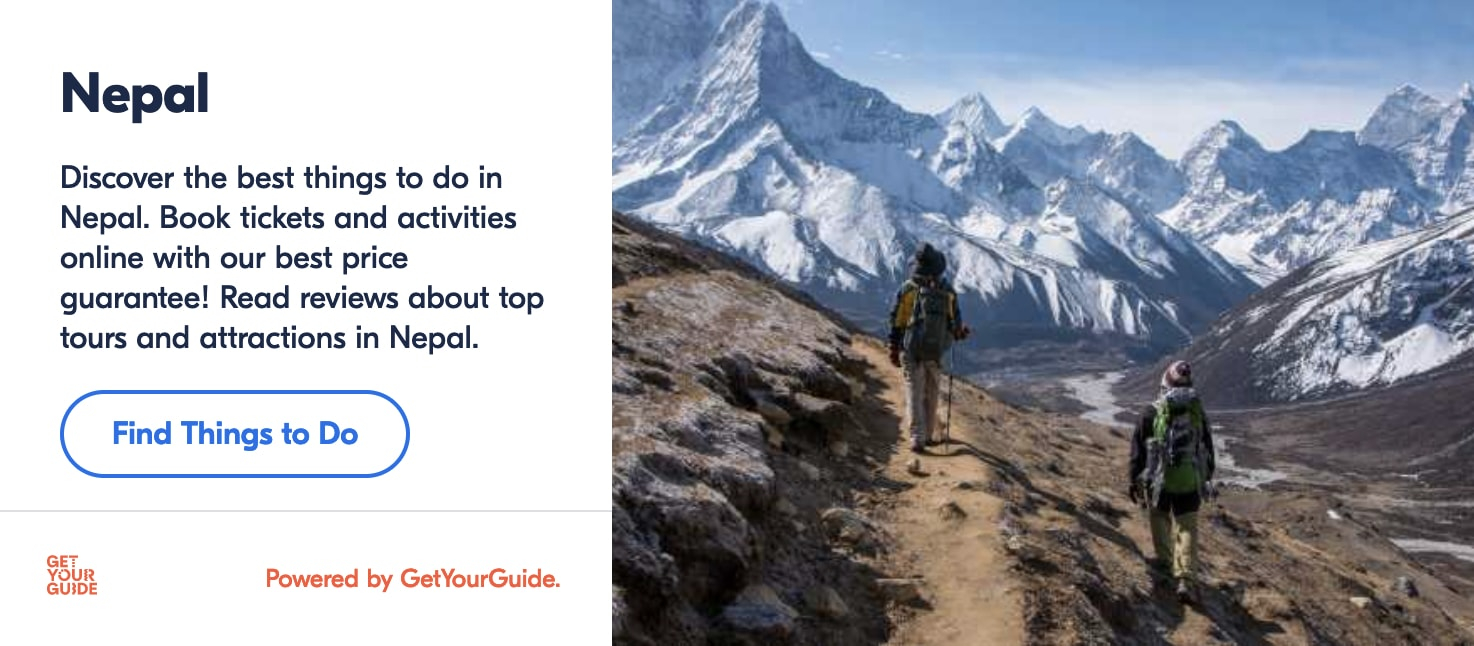‘A shaman festival takes place on the day of Janai Purnima.’ When I read the line, it didn’t take me long to decide I wanted to attend the festival. The festival takes place at Gosaikunda lake – located at the altitude of 4380 meters. I didn’t know if the shaman festival takes place at any other location. In fact, I had no idea what to expect from the festival itself. “Gosaikunda it is then,” I thought, as I made up my mind about attending the festival.
I reached Kathmandu a week before the planned trek. Having been to Nepal for so long but not having trekked could put me at disadvantage if I decided to visit Gosaikunda. To get some idea about the trek and the festival, I met Thile – a sherpa guide. I was meeting him after more than two years – last meeting him in 2019 when he shared his story about becoming a ‘mountain man.’
Thile advised me about the precautions to take while trekking. He also lent me spare trekking poles. Before meeting me, he had called people he knew in Gosaikunda and told me accommodation won’t be an issue and that I didn’t need a tent. He wasn’t sure whether any celebrations will take place at the lake, however, owing to the uncertainty during the pandemic. “Take warm clothes,” he said and wished me the best for the trek.
Festival or not, I decided to visit Gosaikunda anyway and shopped for necessary items in the following days. Because I will be slow, it might take me four-five days, I thought. So I left 6 days before Janai Purnima. I had chosen the route via Dhunche.
The Gosaikunda Trek: An Overview
Situated at the altitude of 4380 meters within the Langtang National Park, Gosaikunda is a lake considered holy by Hindus and Buddhists. The region has been a Ramsar site since 2007.
On the occasion of Janai Purnima that usually falls in August – September, thousands of devotees visit the lake as part of a pilgrimage. Shamans from across the country also visit the lake to perform rituals this day.
The shaman festival celebrations include singing and dancing by the lake that continues until the night. Shamans play the traditional ‘dhryangro’ drum, circumambulate the lake and perform rituals at the Shiva temple as well as Trishul Dhara from where the lake is said to originate.
Related: View my photo album showcasing the shaman festival of Nepal

I began my journey by taking a bus from Kathmandu to Dhunche. From there, I reached Gosaikunda via Deurali – Dhimsa – Sing Gompa – Cholang Paty – Lauribinayak route. On my way down, I chose the Gosaikunda – Lauribinayak – Cholang Paty – Mukharka – Thulo Syabru route to finally reach Syapru Besi. While the former route was steep, the latter was rather muddy and slippery owing to the almost-departing monsoon.
If you plan to trek to Gosaikunda/Langtang to attend Janai Purnima, make sure to carry proper rain protection and also warm clothing. Be prepared to deal with muddy, slippery trails and leaches. Accommodation and dining along the way wasn’t a problem, although you will have to make arrangements in advance for the full moon night of Janai Purnima. If you plan to stay the night, you can carry a tent, too.
The Gosaikunda trek during the months of Shravan and Bhado is primarily done by pilgrims. If clear mountain views are your goal, this may not be the best time to visit the region.
Day 1: Kathmandu to Dhunche
I had booked a bus to Dhunche two days in advance from the Machha Pokhari counter near Gongabu Bus Park. I was told a ‘deluxe’ bus would leave at 8:00 and to avoid reaching late in the evening, I decided to take the option.
Two days later, I was on my way to Dhunche. In the next few hours, the bus was carrying more than its seating capacity – something common during the usual times but not allowed by the prohibitory orders still in place.
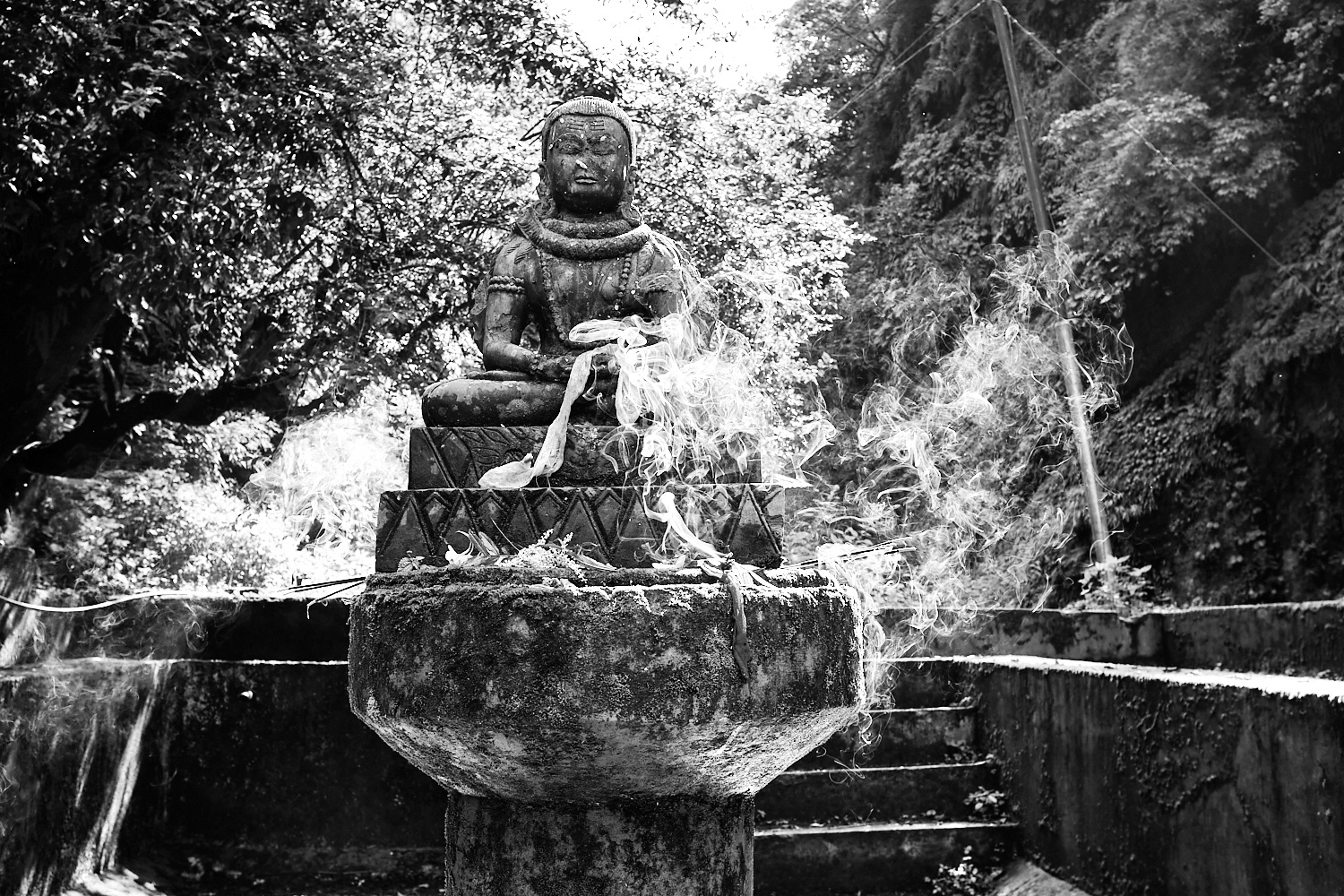
As the bus reached Langtang National Park region, we were asked to get down and get our luggage checked. I was asked to remove everything from my backpack and lay it out on a table from where a camera could see. After this, I bought my entrance ticket that costs rupees 100 for Nepalis, 1500 for SAARC nationals, and 3000 for other foreigners.
Around 16:00, I was in Dhunche where I spent a night. It was cold at night and I wondered if I had enough clothes to keep me warm in Gosaikunda.
Day 2: Dhunche to Dhimsa
The next morning, I was ready to begin the trek and left Dhunche around 8:00. I stopped for rest in Deurali where I heard an elderly man saying the festival had been cancelled, according to an announcement on the radio. Having heard that, my hope for attending the festival nearly faded away. But by now, my goal had been shifted from attending the festival to finishing the trek and enjoying my time.
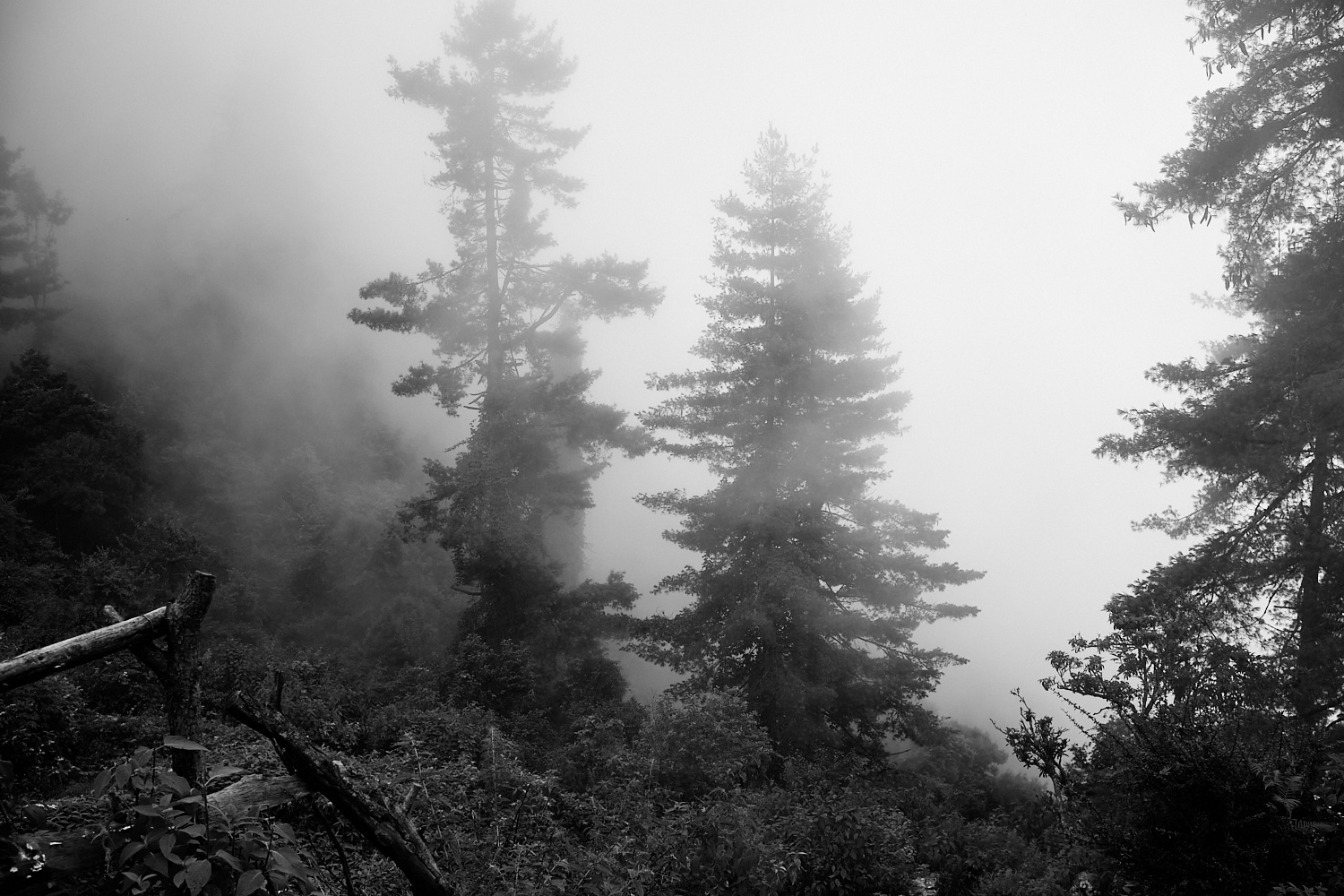
Continuing on the steep climb, I reached Dhimsa around 16:00. There were two lodges shown on the map and I stayed in the first I found. In the following hours, many people came to the lodge and it seemed like the place was full. In the evening, I sat in the dining with others sitting by the fireplace. With daal bhat, I was served pickle made from a herb that helps avoid altitude sickness, according to the owner of the lodge.
After dinner, I went to sleep as many other continued chatting, playing music, and singing.
Day 3: Dhimsa to Lauribinayak
When I left the lodge next morning, I noticed a cow near the lodge giving birth. I informed the man and the family seemed happy to have heard the news. The man had a look at the cow and thanked me. On the way, a man told me there will be ‘jhankris’ and ‘dhamis’ at the lake – referring to Nepali terms for shamans. This added more to my confusion but also gave me some hope of a ‘festival’ of some kind.

My first stop for the day was Sing Gompa, also known as Chandanbari. Situated at the altitude of 3250 meters, Sing Gompa seemed like a thriving village bustling with visitors – most of them on their way to Gosaikunda and some returning. There’s a monastery and some lodges around. I visited the cheese factory I had heard about earlier where a man explained the process of cheese-making. I decided to visit them again on my way back and buy some cheese.
The next stop was Cholang Pati or Cholang Paty at the altitude of 3584 meters. I sat there sipping some black tea as dozens of people sat there chattering. This was where I first saw shamans – dressed in long white skirt-like clothes called ‘jama.’ I encountered them again a few times along the way.
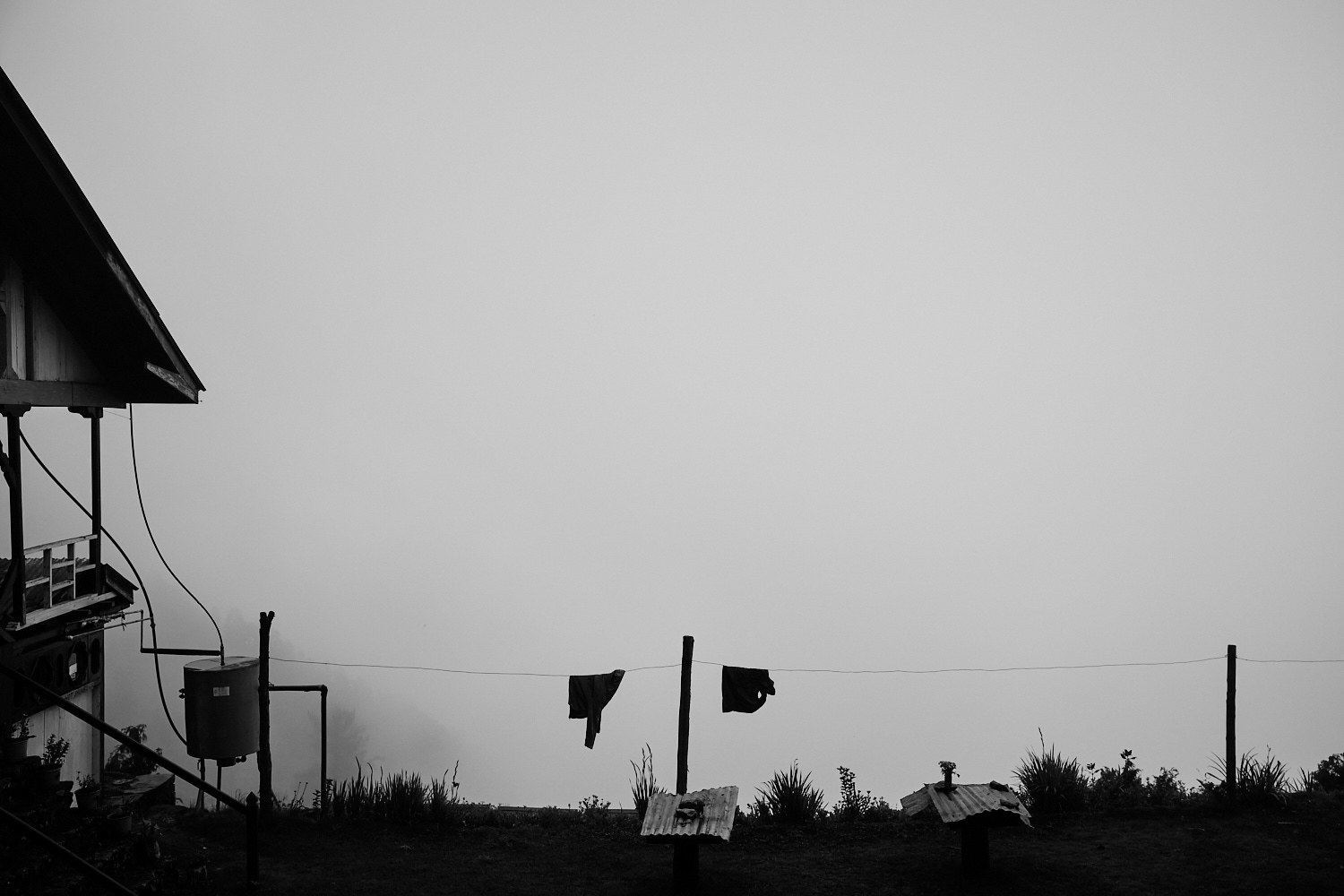
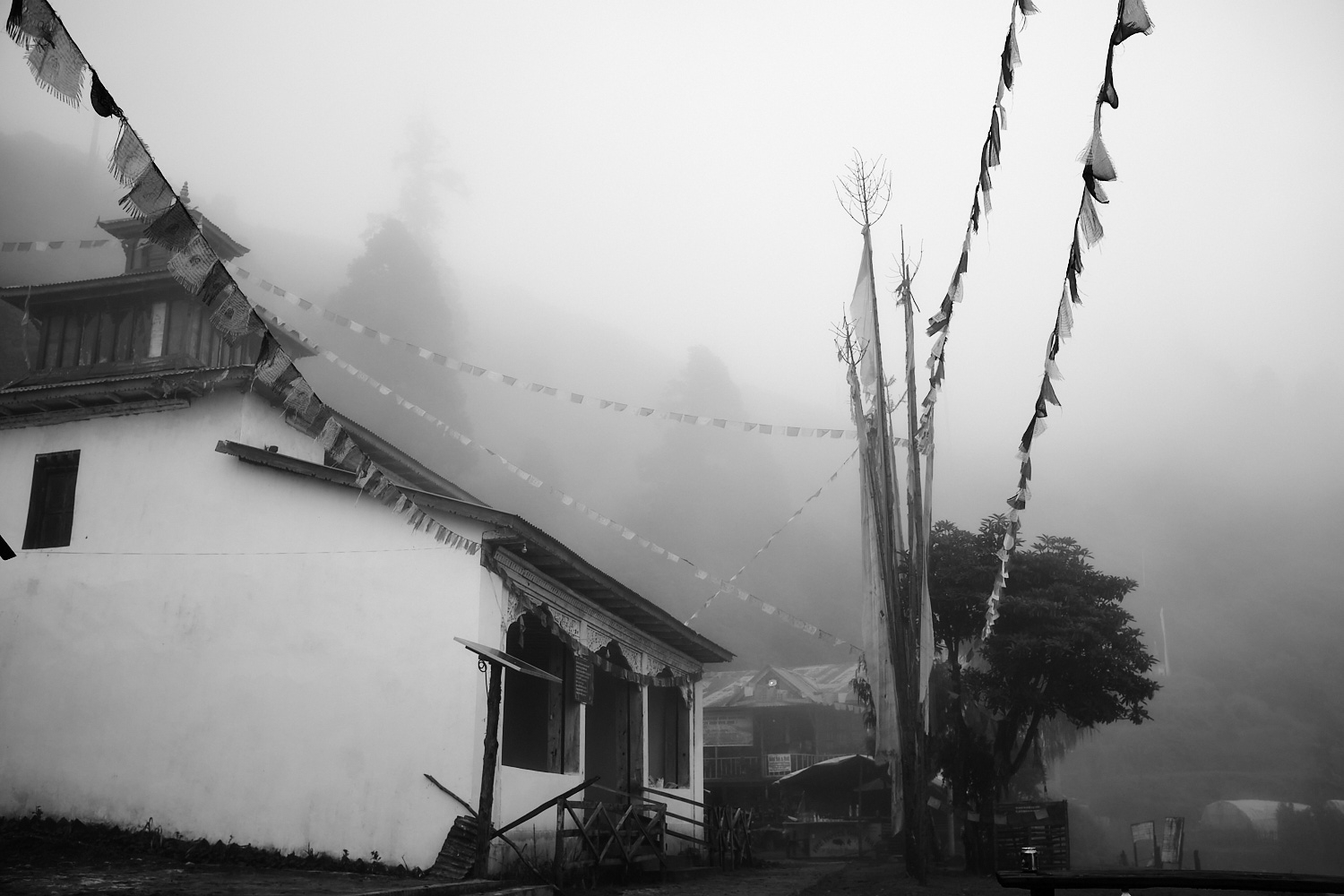
The woman at a lodge in Cholang Pati tried convincing me to stay for the night. That’s what I had planned initially, too. But after reaching Cholang Pati, it seemed like I could continue. “Maybe when I return,” I told the woman who had a beautiful smile and continued towards Lauribinayak.
It had been a foggy day mostly. Those tall trees covered in fog, dark figures of people walking in distance, and horses running in both direction through the forest – it all felt to me as if I was part of some ‘film noir.’ Men chanting ‘jay bhole’ as they walked through the foggy trails added more character to my ‘noir imagination’ as I carried on.
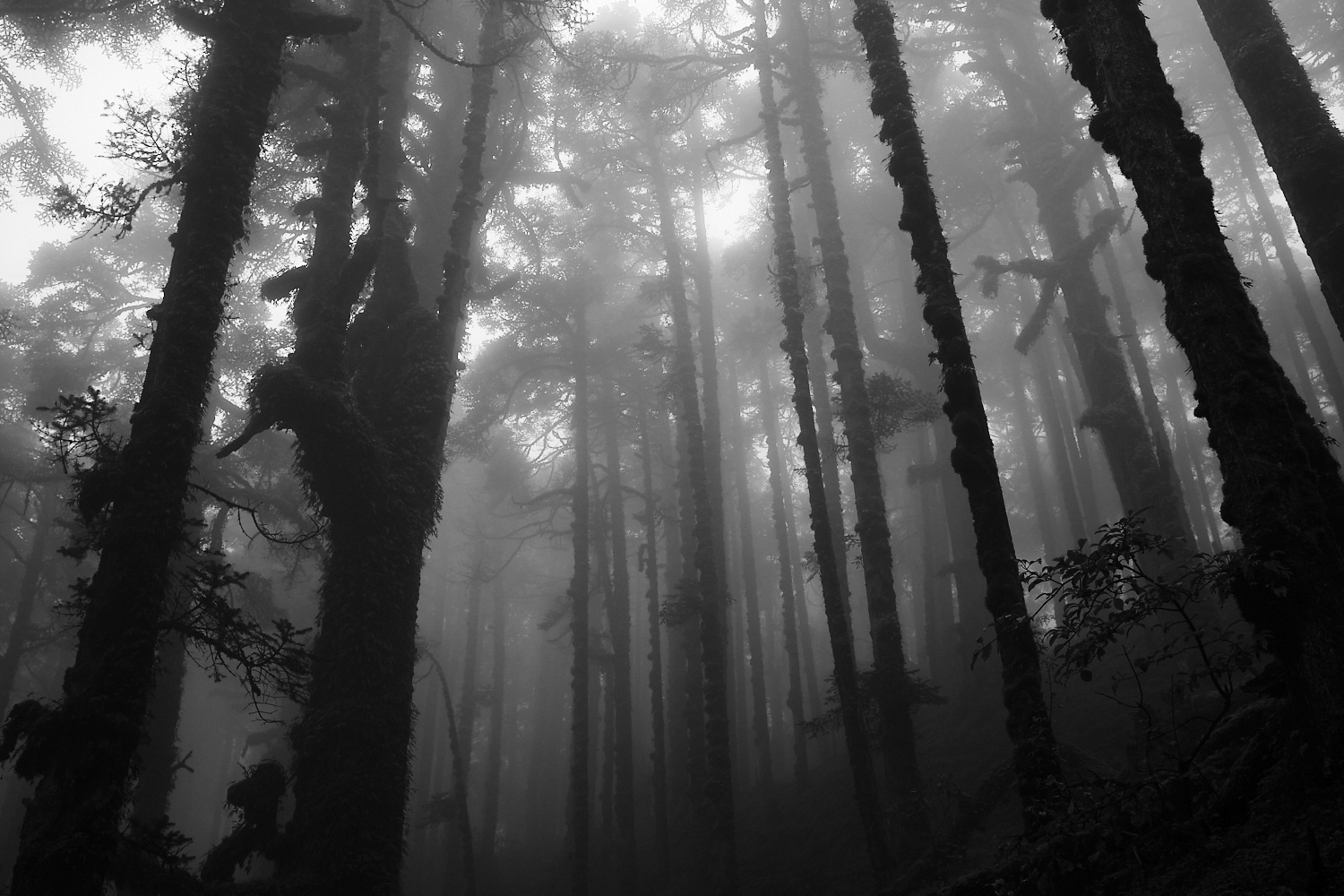
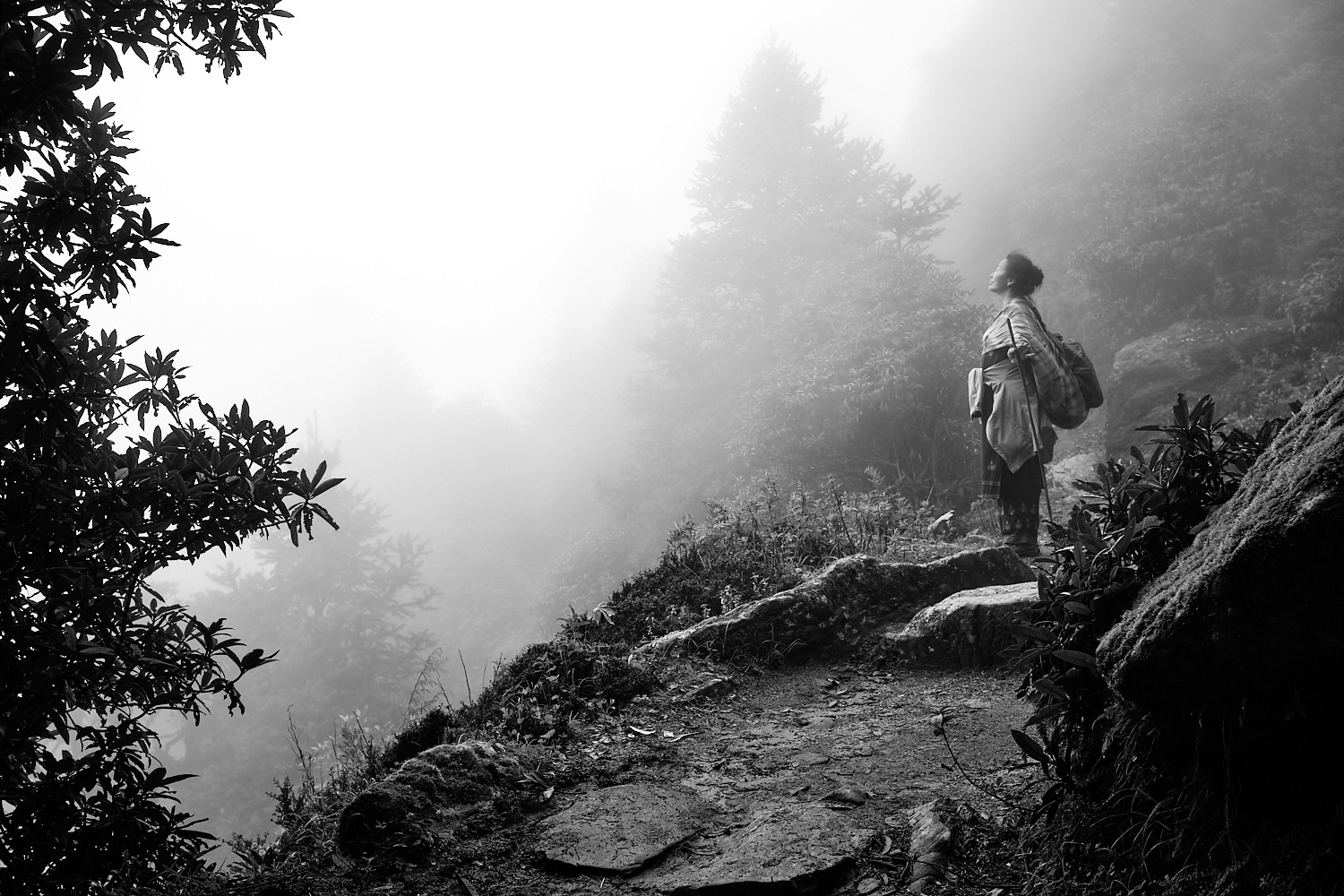
In the evening, I was at the altitude of 3950 meters in Lauribinayak where a few dozen people were staying for the night. With a headache, I went to sleep and thought of waking up a bit later than the past two days as Gosaikunda wasn’t much further now.
Day 4: Lauribinayak to Gosaikunda
The next morning I woke up to the sound of drums being played nearby. I looked at the time – it was around 5:00 – and tried to take a look through the window. I didn’t see much and decided to go downstairs. When I reached outside, I saw some shamans proceeding towards Gosaikunda.

Within the next hour, I was on my way to the lake, too, hoping to catch the shamans. Before leaving, I looked at the beautiful sky that boasted smooth white sheet of fluffy clouds. As I stopped to take rest after a while, I saw a mountain peaking through the clouds. This was the first and the only time I saw a mountain during the trek.
While stopping at the Buddha temple, I met the elderly man I first saw in Deurali. He was already returning from the lake – leaving me surprised of his stamina. As I neared Gosaikunda, I noticed the number of people in both directions had significantly increased. Many people – mostly men – were returning from the lake with orange scarf around their necks.
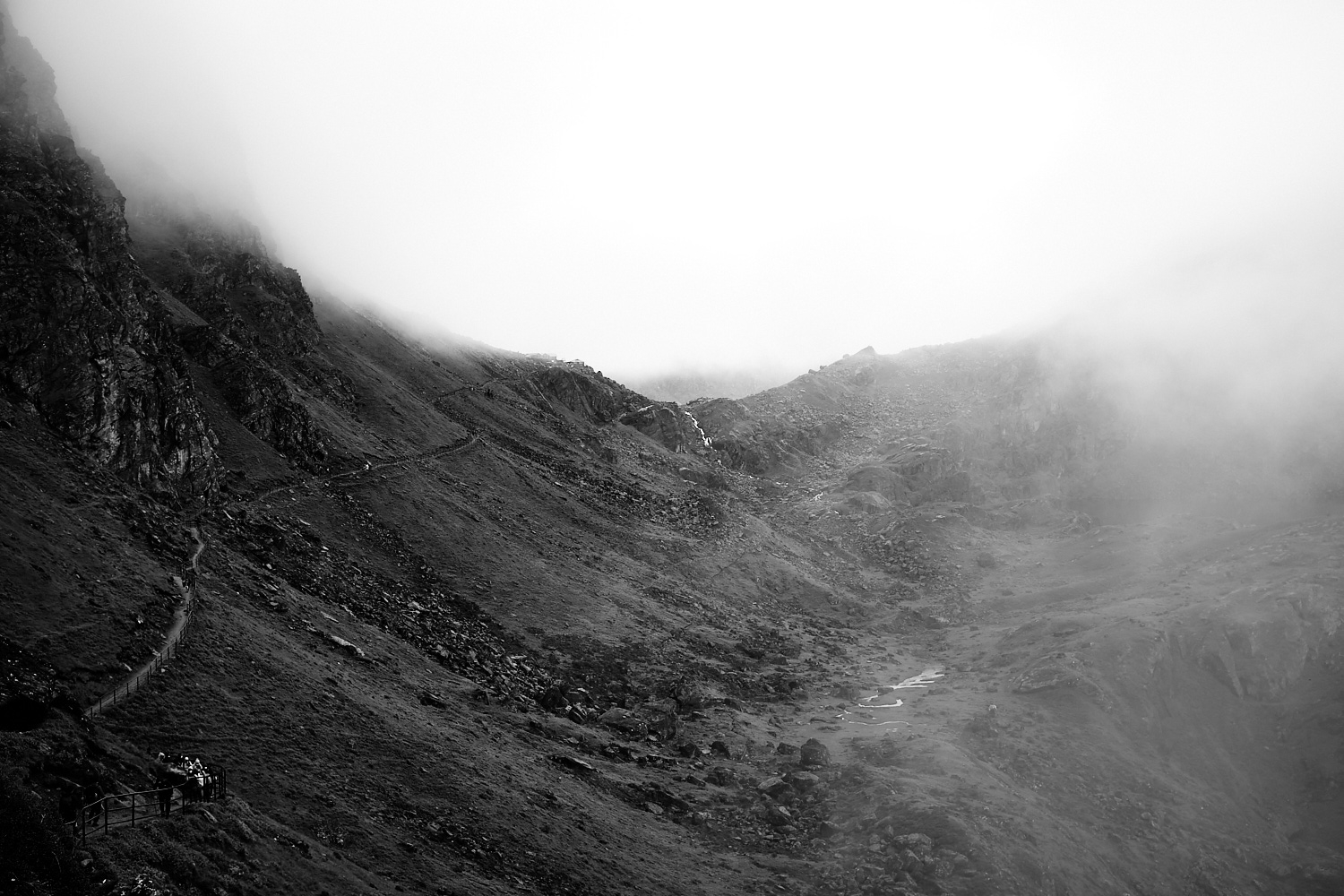
Finally reaching Gosaikunda in the afternoon, I stayed at Namaste Lodge. The man who checked me in was surprised that I wanted to stay four nights. The owner of the lodge told me I could stay in the room for three nights and will have to move to a tent nearby on the fourth night – the night of Janai Purnima. He was confident of ‘thousands of people’ coming on the full moon night.
Later on, I visited the lake. It was drizzling and the lake was mostly covered in fog. I saw some people performing rituals at the lake. Some of them were taking a dip in the cold water. A dip in Gosaikunda is said to wash off one’s sins.
I spent that evening at the lodge, sitting in the dining and thinking what to do in the next four days. My headache seemed to have almost disappeared but my impatience was growing.
Day 5 – 6: Getting to Know Gosaikunda
For the next two days, I visited the lake, the shiva temple, and Trishul Dhara. I contemplated the idea of trekking to Suryakunda but eventually deciding not to.

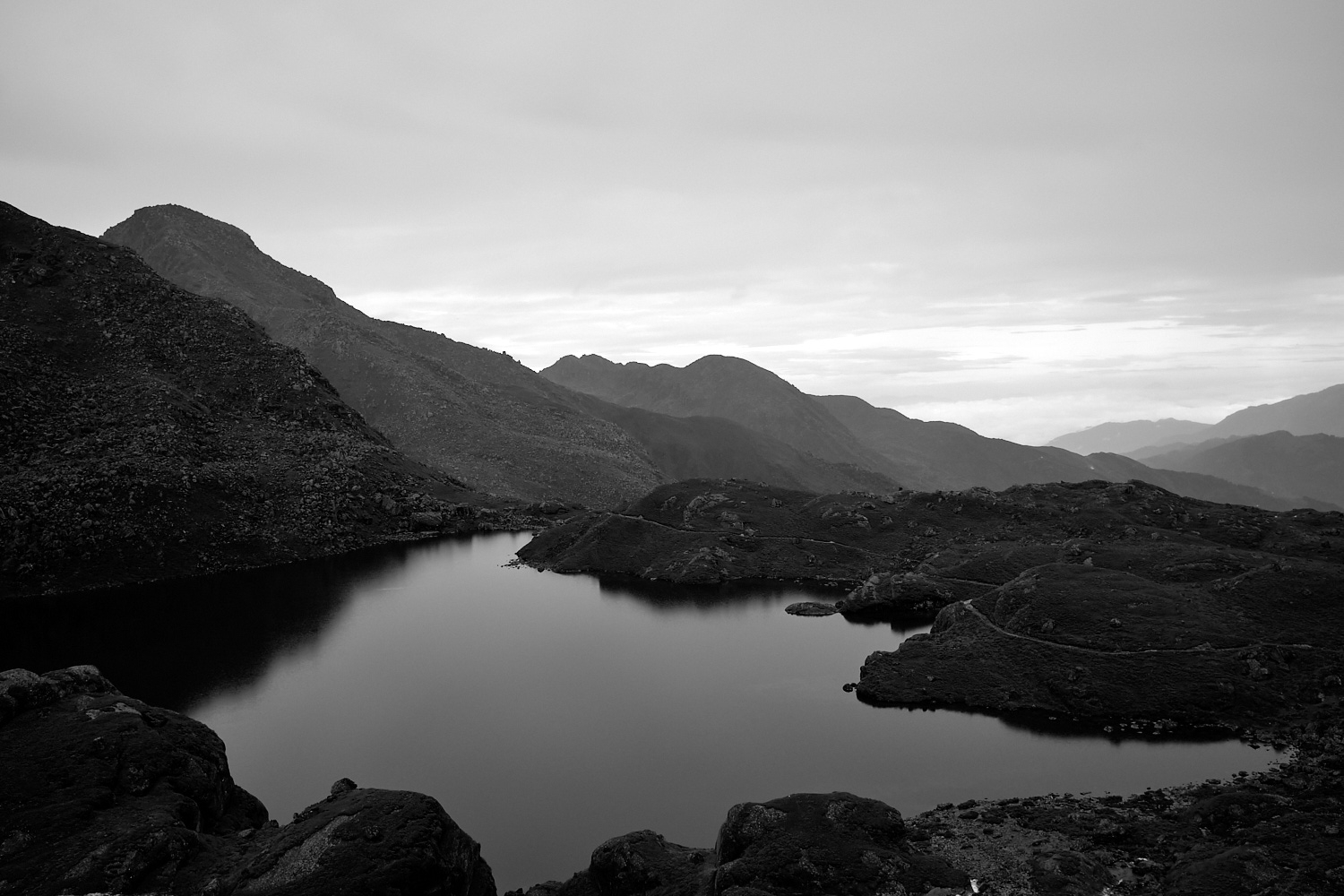
I also tried to get some information about Janai Purnima and shaman festival. Phurbu – a man from Thulo Syabru who was selling items related to the rituals told me usually there are thousands of people at the lake during Janai Purnima. But due to the pandemic, he wasn’t sure how many people would be there this time. Last year, too, according to him, were not many people at the festival.
Day 7: Janai Purnima and Shaman Festival
The doubt, impatience, and anxiety all came to an end on 21st August – the day of Janai Purnima. Hundreds of people were coming to the lodge asking for a room and returning as there was none left. The tents nearby were also full and I wasn’t sure where I would spend the night. The lodge owner offered me a room and a tent at a price I wasn’t in situation to afford. He told me how even 10 people were sleeping in one room and how people were paying 10,000 rupees for a room.


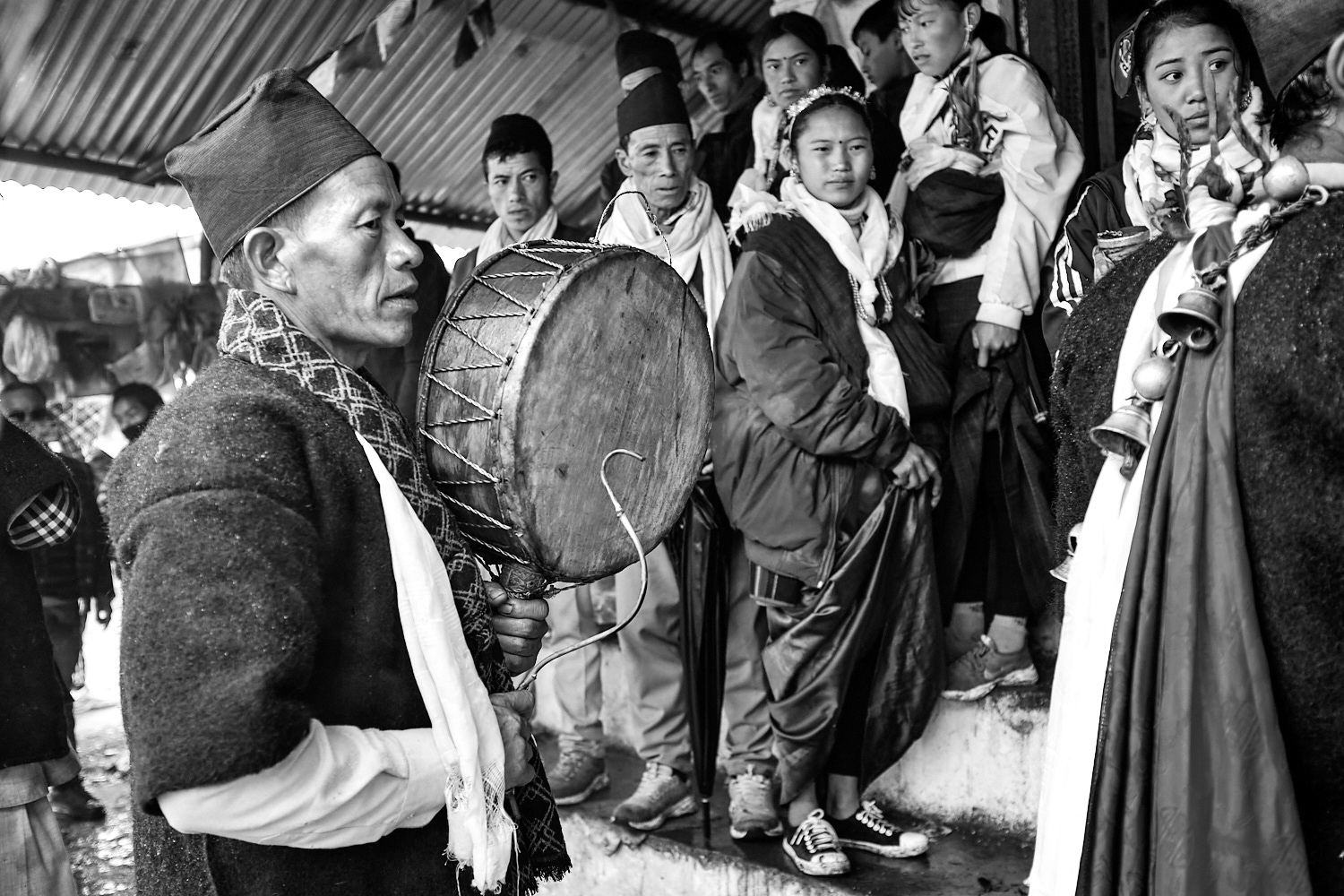

Deciding to worry about the night later, I went to the Shiva temple by the lake. Near the temple I saw men and women dressed in beautiful clothes singing and dancing. At the temple were some shamans who circled the temple while playing traditional shamanic drum called ‘dhyangro.’ Later, I joined the shamans and a crowd of hundreds of people as they visited Trishul Dhara. The drums continued to be played as shamans performed rituals. Young men and women sang and danced nearby.
Also read: Attending Nepal’s Shaman Festival at Gosaikunda Lake
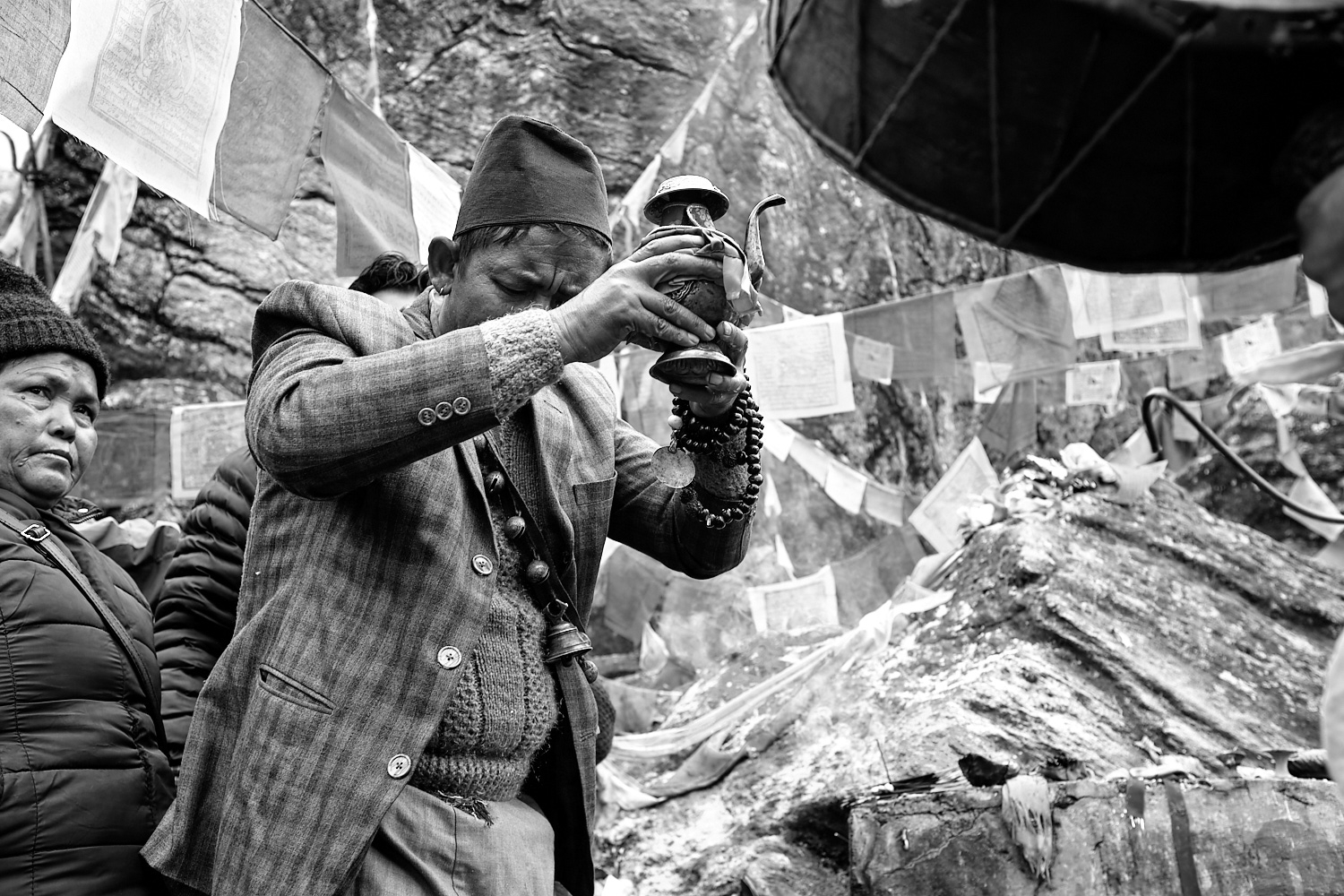

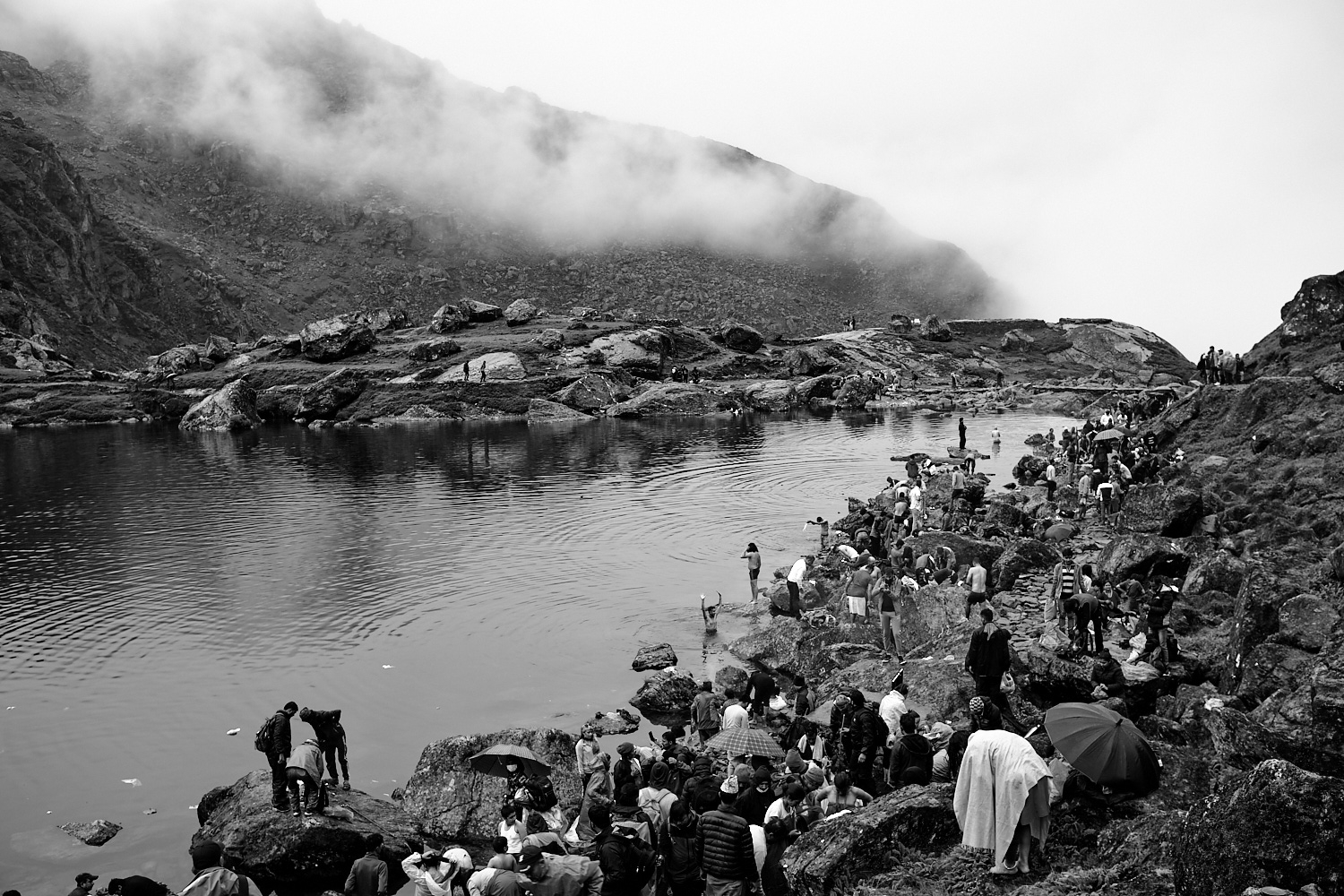
Top left – A shaman performing rituals with a decorated metal jug. Top right – Shamans sing and play ‘dhyangro’ shamanic drum. Bottom – Devotees performing rituals at Gosaikunda lake on the day of Janai Purmina
At the lodge that night, I was allowed to stay in a common area upstairs. I knew sleep wouldn’t come easy, if at all. I stayed awake thinking about how beautiful the day had been and how the decision to come all the way was worth it.
View Shaman Festival of Nepal photo album to see more picture from the festival
Day 8: Gosaikunda to Mukharka
The next day, I left Gosaikunda along with hundreds of other people as the chants of ‘jay bhole’ echoed in distance. After reaching Cholang Paty, I decided to go down towards Syapru Besi instead of Dhunche.
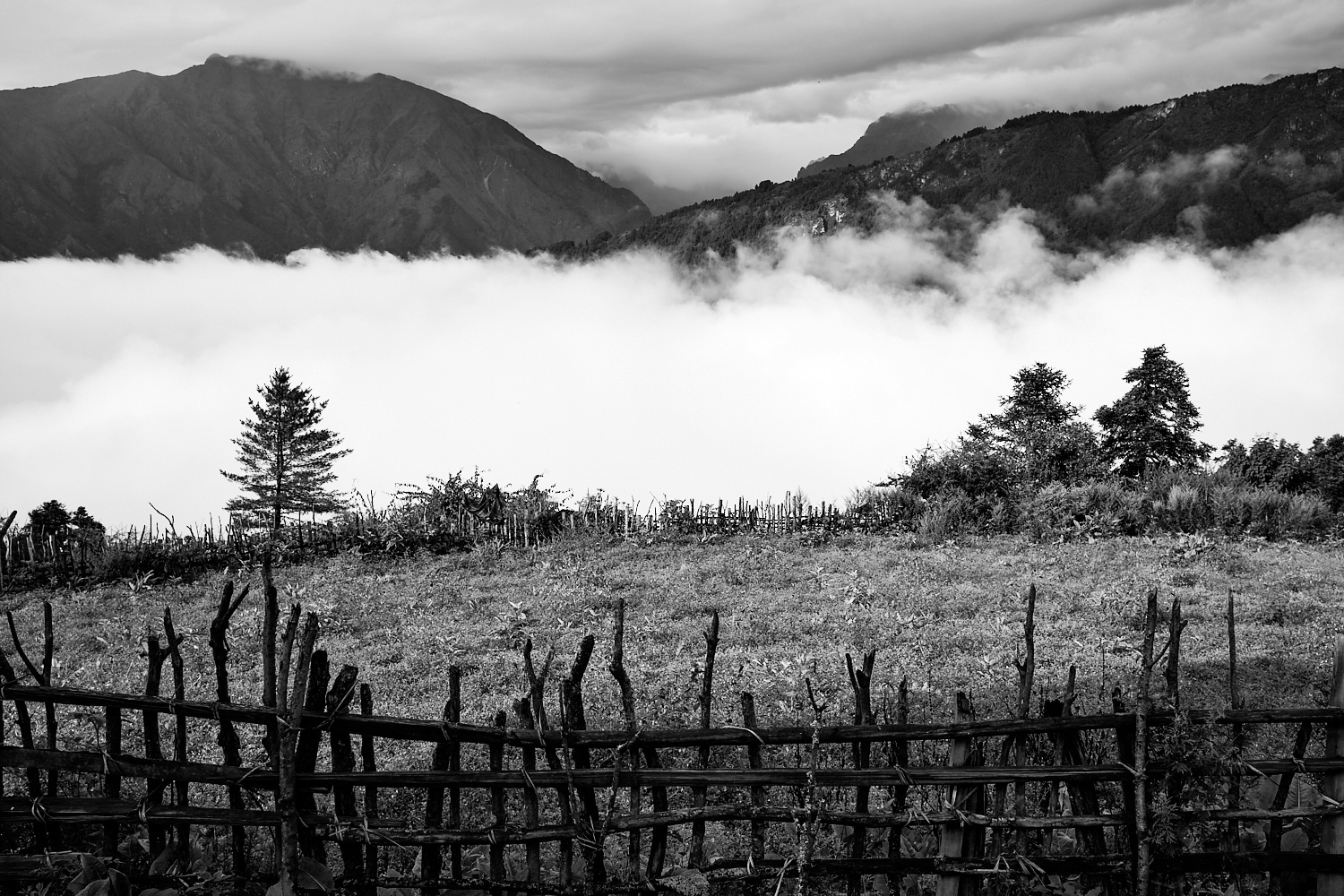
The trail had hardly other people and rhododendron trees seemed unrecognisable without their beautiful flowers. Waking through the muddy trail enjoying the tranquillity, I reached Mukharka where I spent a night.
Day 9: Mukharka to Syapru Besi
The way to Syapru Besi wasn’t any better for the most part. It was muddy, slippery, and inconvenient. But in the end, I managed to reach Syapru Besi around 17:00, stopping for a while in Thulo Syabru. The first thing I did after reaching Syapru Besi was to get a ticket for a morning bus to Kathmandu.
That night at a lodge, I enjoyed a plate of delicious daal, bhaat, tarkari. Showering after a week filled me with energy while my feet remained in pain. “I will sleep well tonight,” I thought as I turned off the light.
Day 10: Bus to Kathmandu
When I reached the ticket counter next morning, I was told there was no bus. “There’s no road,” said the man, repeating what a woman at the lodge had said the previous night. It turned out there was a landslide and the bus couldn’t come to Syapru Besi.
But there’s almost always a solution, isn’t there? The man who sold me the ticket refunded my money and suggested keeping the ticket as a memory. Then he arranged me along with other people willing to go towards Kathmandu into a Scorpio car, mostly referred to as ‘jeep.’ The price to reach Thulo Bharkhu where we could get the bus was 200 rupees to begin with. Then it jumped to 250 and finally settled at 300 rupees.
When we finally reached Thulo Bharkhu after a ride though muddy, slippery road, another surprise awaited us. “You will have to hike for around 30 minutes to reach the point where the bus is,” said the driver as he collected money. A man in the group knew the way and we were supposed to follow him. “How bad could it be,” I thought as I tightened the straps of my backpack and followed the group of people.
That little hike turned out to be the most difficult part of the last 10 days. The trail was almost non-existent. It was steep, slippery, and highly inconvenient for me to continue. At one point I was holding onto some grass in order to not fall down until a young man came to my rescue. I envied the rest of the people who hiked through as if they were taking a walk in a park. I made it to the road eventually, having cursed myself along the way for ending up in such a situation.

But as I reached the road and waited for the bus, I thought it wasn’t bad, after all. I had to enjoy the whole package consisting of some good and some not-so-good experiences. As the bus finally departed and breeze hit my face, I was lost in thoughts about what an experience it had been.

